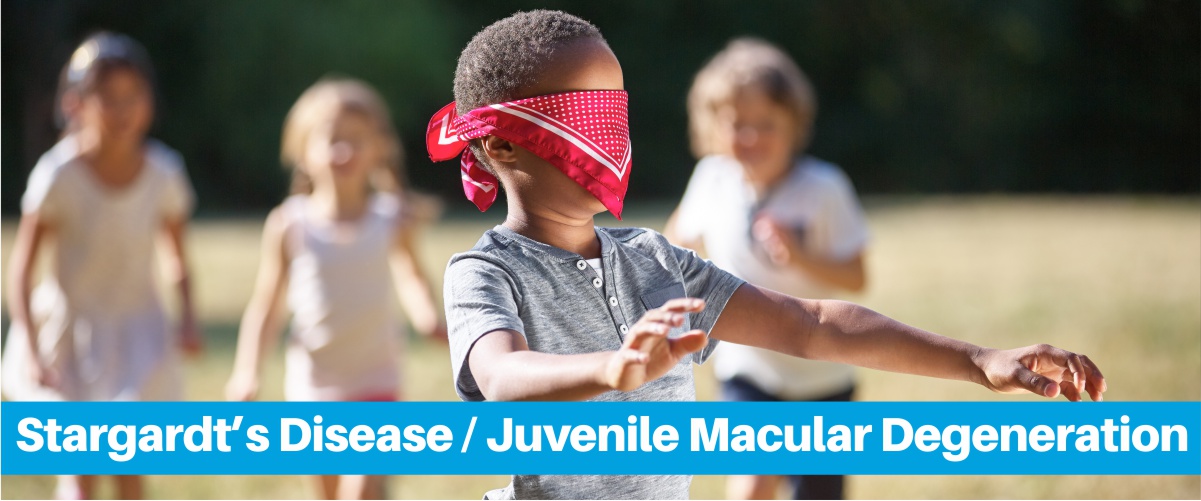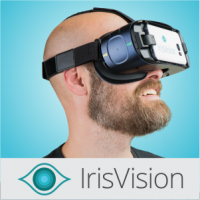Stargardt’s Disease

Stargardt’s Disease is a rare inherited retina disorder that strikes in childhood and adolescence, stealing vision. Also called juvenile macular degeneration, the disease causes progressive damage to the center of the retina that provides central vision. We work with many people who have Stargardt’s Disease, including Bryan and Bradford Manning, two visionaries who are the founders of the nationally renowned start up Two Blind Brothers. Although there is no cure, there are advanced medical devices that can help enhance remaining low vision and expand the lived environment. Here is what you need to know about Stargardt’s Disease.
Stargardt’s is an inherited retina disorder that is considered rare, striking one in every eight to ten thousand children. It causes vision loss in the area of sight responsible for seeing objects that lie straight ahead and gets progressively worse. Stargardt’s usually causes vision loss in both eyes, although for most people it doesn’t cause total blindness.
Genetic damage to rods and cones in the eye
Stargardt’s Disease causes damage to the rods and cones in the eye. They are called photoreceptors because they receive the light that comes into the eye and converts into signals that are sent to the brain. The brain then translates the signals into images. Rods and cones perform amazing tasks as part of the function of vision:
- Rods detect objects in dim and dark lighting
- Cones detect detail and color
Stargardt’s Disease deteriorates both the rods and cones but in most cases, causes more damage to the cones.
Stargardt’s is an inherited disease, the result of genetic mutations in the chromosomes. Stargardt’s is an “autosomal recessive gene” meaning that both parents must carry the gene in order for the disease to be passed on to a child. According to the National Eye Institute 95 percent of the cases of Stargardt’s Disease are autosomal recessive mutations with the remaining five percent being rare mutations caused by different genes.
Diagnosis of Stargardt’s Disease
Stargardt’s is diagnosed by ophthalmologists in several different ways. Each involves a detailed examination of the retina. The first indication of the disease is the existence of Lipofuscin deposits (an insoluble granule that contains proteins and lipids) in the eye that appear as yellowish flecks in the macula at the center of the retina. Other detailed tests to aid in the diagnosis of Stargardt’s can include:
- Testing the vision with a standard eye chart
- Visual field testing: This maps a person’s field of vision and helps to determine the extent to which central vision may be lost.
- Color testing: Three different noninvasive imaging tests are used to test color vision which can be lost in the later stages of Stargardt’s. They include autoflourescence, electroretinography and optical coherence tomography.
- Fundus photo: This is a picture of the interior lining of the eyeball, including the retina, that can detect lipofuscin deposits.
- Optical coherence tomography (OCT): This is a scan of the eye that uses ultrasound to capture images of the eye. It detects abnormalities in the thickness of the retina to determine if there is deterioration.
Treating Stargardt’s Disease
Currently, there is no cure for Stargardt’s Disease, but that doesn’t mean that remaining vision can’t be enhanced. The majority of our patients who suffer with Stargardt’s Disease have been told that nothing more can be done to enhance their vision. We don’t believe that. In fact, every day we help patients with innovative medical devices that expand their lived environment. Disruptive technologies like IrisVision and custom Telescope or Microscope glasses can magnify the central field of vision and make it possible to read, drive, see faces clearly and watch TV.
Visionaries with Stargardt’s
Two of the people we have worked with who have Stargardt’s Disease are Bryan and Bradford Manning, founders of the nationally renowned clothing company Two Blind Brothers. They live life to show others that disabilities do not have to be limiting. Diagnosed with Stargardt’s at the age of seven, the brothers went on to found the clothing company with the goal of donating its proceeds to eye disease research. Last year, after just one year in business, they had donated more than $70,000 to research. They are two of the visionaries who live our mission that low vision should not limit daily living or a full and rewarding life. You can read more about them in our Visionary blog series.
If you or a loved one live with low vision call us. Every day we help people who have been told that nothing more can be done to enhance their vision.




